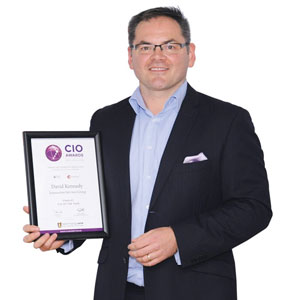THANK YOU FOR SUBSCRIBING

David Turkington, Head of Technology, APAC, GSMA
Since mobile telecom networks went digital (circa GSM in 1993) it has been my observation that the telecom and IT domains have been coalescing to take advantage of the economies of scale of both. Phones have become computers or computers have become phones, networks have become software, running in data centers and development continues apace!
There have been several technologies that contribute to this new capability:
• Server technology - servers have become powerful that they can handle data processing and in particular signaling message processing in near real time, whereas in the past, in order to get deterministic response times it was necessary to have bespoke hardware network elements to assure protocols would work. In the past the operating system overhead and responsiveness on a server would have been too much of a performance hit that it wasn’t feasible before.
• New standards for core network signaling, network functions can be virtualized and run as processes in ‘the cloud’. As IP (Internet Protocol) started to dominate they were used within the network leading to transactional signaling message schemes.
• Containerization technology – this allows software applications that rely on external operating system calls (or other software process components) to be ‘containerized’ together allowing them to be moved between compute platforms without having to worry about compatibility or software versions of services offered by the operating system.
• Automated deployment – using the likes of Kubernetes to ‘spin up’ instances of containerized applications. This allows networks to automatically react to traffic demands and allocate more capacity to whatever bottleneck is in the system depending on the nature and characteristics of the offered traffic load. This is one of the salient features of virtualization – a marketing push increases traffic temporarily – so spin up more instances to handle the extra load. You don’t need to buy more bespoke network boxes to sit idle until needed as the virtualized network function can be upgraded as the needs arise – and the commodity servers are cheap.
• Software Defined Networking (SDN) – as with the core network function virtualization – SDN disaggregates the traffic being routed from the control of the routers – so they can be reconfigured on the fly to react to the needs of traffic in the network. By running users traffic through an SDN the optimum performance can be achieved, for example, there is no need for user traffic to go to the cloud if it is not needed there.
• Management and Orchestration (MANO) - All of this is controlled by the orchestrator which is a framework to allow for control of virtualized resources, components, and underlying infrastructure.
• Software Defined Radio – with advances in signal processing power, algorithms and components, radio systems can be reprogrammed to handle new complex signals that advance the capabilities of the radio communications system. This means they can be upgraded after installation. It also allows new radio system architectures where, for example baseband processing – which was originally part of the radio base station can be pooled remotely and allowing for another optimization by allocating resources to busy sites more easily.
5G Network Virtualization gives great opportunity to reimagine the mobile network core network to be more scalable and optimally configured for the prevailing traffic situation. The use of cloud network server farms along with Software Defined Networking will require renewed focus, up-skilling and training for operators’ engineering departments to operate successfully in this new domain paradigm.Weekly Brief
I agree We use cookies on this website to enhance your user experience. By clicking any link on this page you are giving your consent for us to set cookies. More info
Read Also













